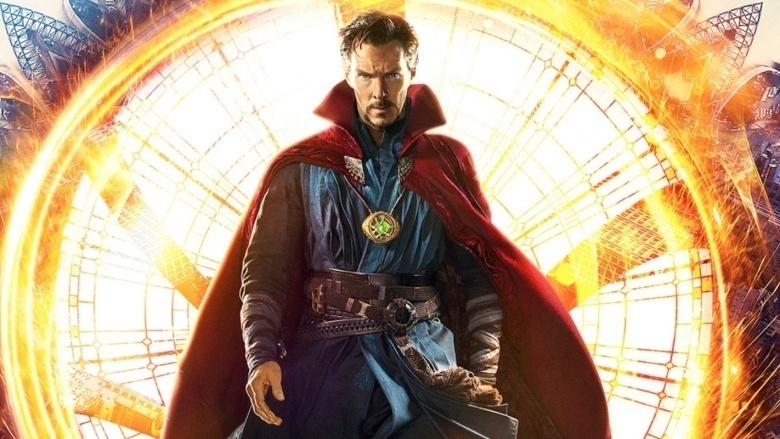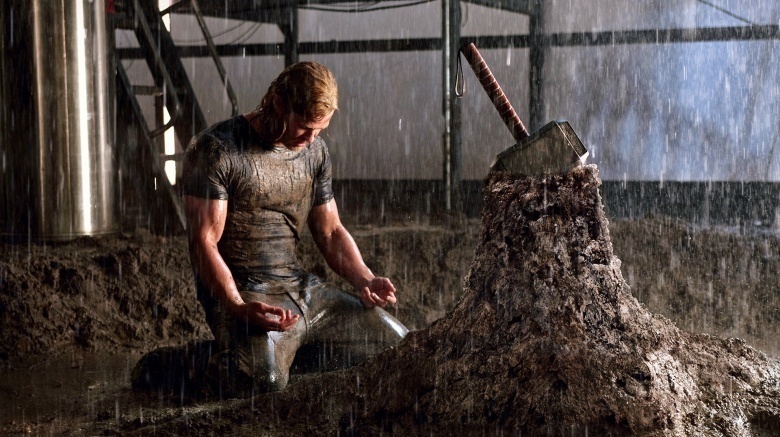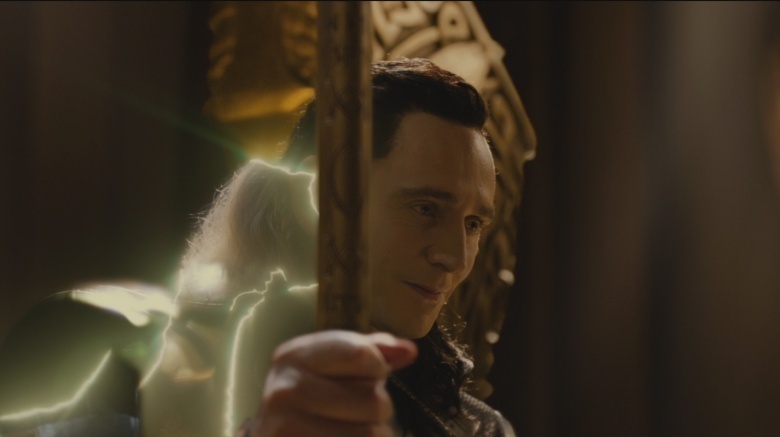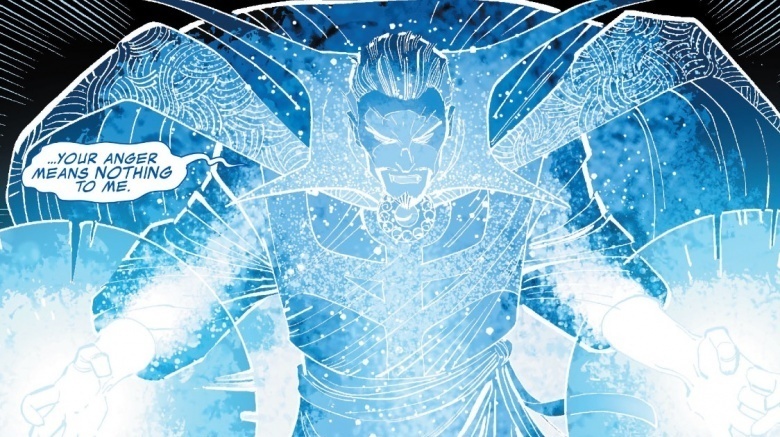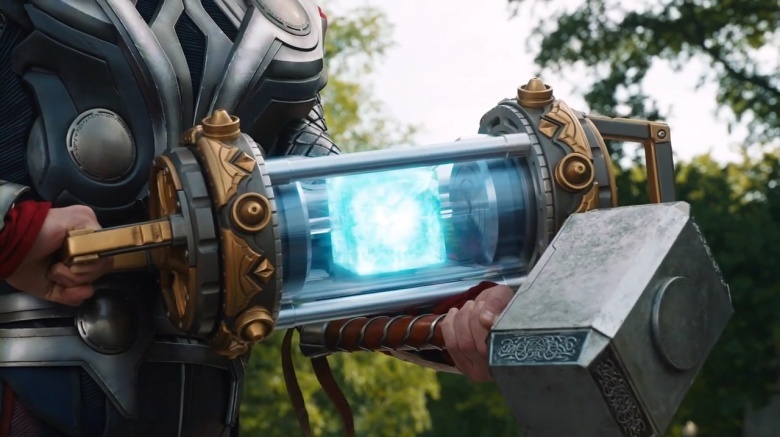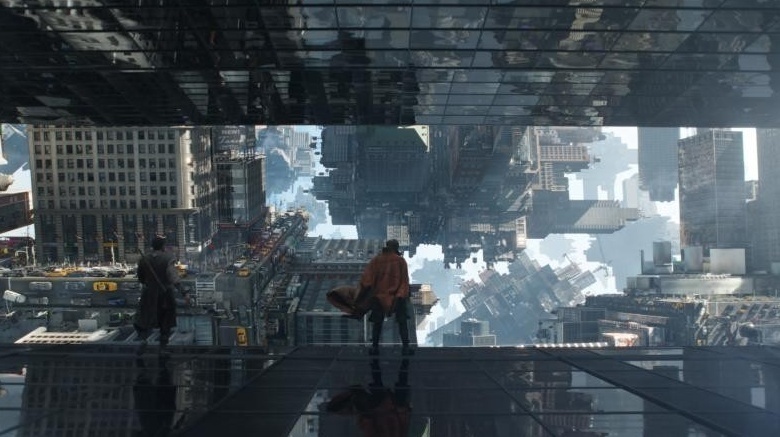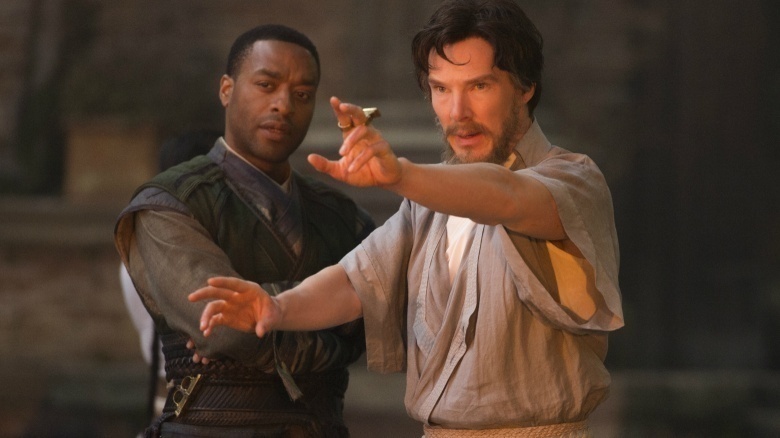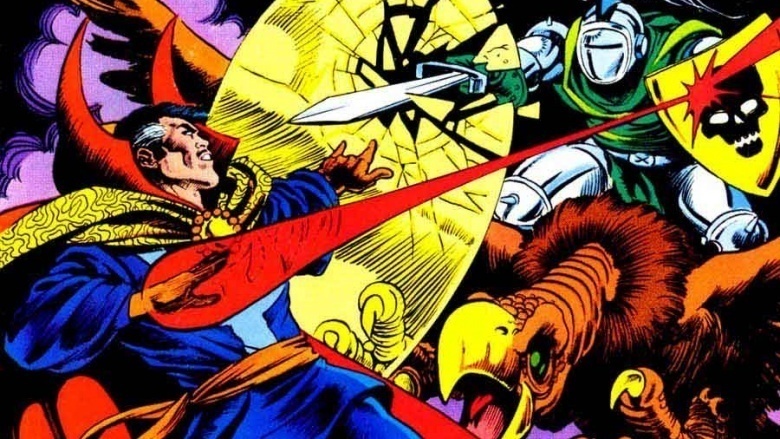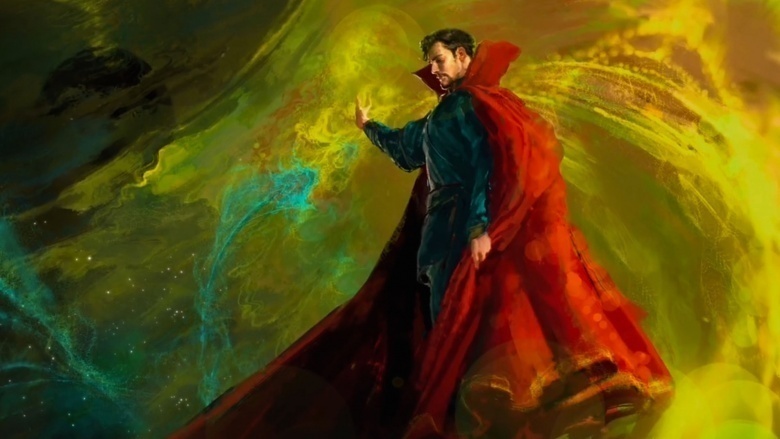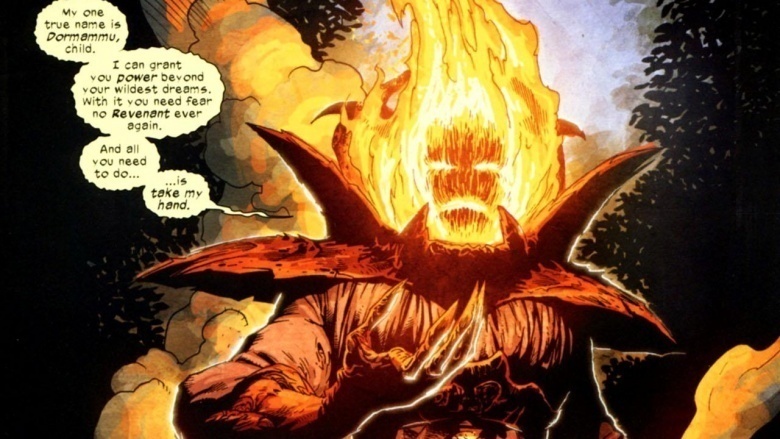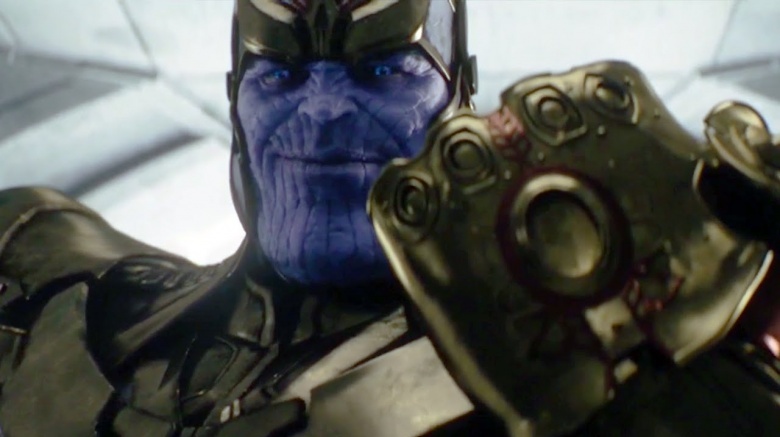What Those Post-Credits Doctor Strange Scenes Meant
We've already broken down multiple aspects of Doctor Strange, including its ending, Easter eggs, and some secretly noteworthy characters you may have overlooked, and now we're bringing you more. It's become a Marvel Cinematic Universe tradition to sneak a few extra surprises in after the end of the main attraction, and this movie's no different: there's still a lot going on once Doctor Strange's credits hit the screen. We stuck around until the lights in the theater came back on, waded through the Dark Dimension of cast and crew member names, and now it's time to finally unearth the secrets of everything we saw after Doctor Strange's credits started to roll.
If you still haven't seen Doctor Strange and you're worried about ruining the movie for yourself, you'd better stick your face back into that book of spells right now, because there are a whole bunch of major spoilers ahead.
Thor's Doctor visit
It's Hammer Time once again as Odin's favorite son makes a long-awaited return after his noticeable absence from Captain America: Civil War. The Mjolnir-swinging blonde brute doesn't look as heroic as usual—sporting a thicker-than-usual beard and the regular clothes of puny mortals, Thor visits Stephen at Sanctum Sanctorum. After getting the Asgardian a magically-refilling giant beer, Strange gets down to brass tacks: he keeps track of major otherworldly threats to Earth, which includes Thor's brother Loki. For some reason, Thor brought his conniving sibling with him to New York to look for their missing father, Odin. For the sake of getting Loki off Earth and back to Asgard as soon as possible, Strange decides to help the Odinsons look for their missing father/king.
Loki's back in New York
The last time we saw Loki in Thor: The Dark World, he was sitting on the throne of Asgard disguised as Odin, with Thor believing his brother died during the fight against Malekith's forces over the Aether/Reality Stone. The last time we saw Odin, meanwhile, was after Thor and Loki escaped Asgard with an Aether-afflicted Jane Foster. Thor didn't seem to notice it was Loki disguised as his daddy dearest, especially when the "King" offered him the throne of Asgard, which Thor declined. He even showed sadness in describing Loki's supposed death, which shows to Loki that Thor still ultimately cares. All that being said, this brief sequence leaves a few things unclear: Did Thor see through Loki's disguise? Did the real Odin contact Thor somehow? All Doctor Strange's credits scene tells you is both Thor and Loki ended up in New York, looking for their father. It's safe to say that the last time Loki was in New York, things were kind of bad...and as we saw in Thor: Ragnarok, there's a lot more to the story.
Ragnarok and roll call
Tossing the Sorcerer Supreme into the mix of Thor: Ragnarok is going to make for some interesting events. Considering Marvel is teasing parts of World War Hulk being implemented during Ragnarok, we can't wait to see what happens when Doctor Stephen Strange meets the greener half of Doctor Bruce Banner. Ragnarok director Taika Waititi supposedly played a huge role in the filming of this mid-credits sequence. Is the Master of the Mystic Arts throwing down with the Hulk? We could imagine Strange trying to fight Hulk on a more spiritual level, going astral-toe-to-green-toe against the angry green giant—and it's probably worth noting that in the comics, Strange was one of the people responsible for sending the Hulk into space exile, setting up the events of the World War Hulk arc in the first place.
Space and Time
Thor interacting with Doctor Strange inadvertently increases the chances of bringing multiple Infinity Stones together. Doctor Strange keeps the Time Stone/Eye of Agamotto in Kamar-Taj, which magically connects to his New York Sanctum. Likewise, the Space Stone/Tesseract remains in the vaults of Asgard under heavy protection (and usually Odin's vigilance, but he's no longer there). Putting Strange in Thor's third main movie moves these Infinity Stones awfully close together. Doc will undoubtedly learn more from Wong about the Infinity Stones, and there is bound to be some kind of crazy spell or form of Divination that Strange could use to find out where the other Stones are—just to make sure they're all properly accounted for and in the right hands. Of course, someone else is on the lookout for them too...
Setting up a sequel
Instead of teasing another superhero crossover, the way Doctor Strange's mid-credits teaser did for Thor: Ragnarok, the post-credits scene established a subplot that will likely work its way into the Sorcerer Supreme's inevitable sophomore film. It's simple enough: Mordo, the sorcerer who abandoned Doctor Strange at the end of the film for his abuse of the Time Stone, visits Jonathan Pangborn—the formerly paralyzed man who first steered Strange overseas towards Kamar-Taj and the Ancient One, where he himself learned how to draw on magic energy and restore his movement. Mordo attacks Pangborn, draining him of the magical powers.
Mordo's explanation as to why he's doing this reveals a huge change in character and a dangerous vendetta. After finding out the Ancient One siphoned energy from the Dark Dimension to extend her life and remain Earth's protector even longer, Mordo was let down by his teacher bending the rules for the sake of the greater good. Likewise, he didn't approve of Strange using the Time Stone, knowing its capacity for tearing the space-time continuum. Breaking from his prior belief in rigidly following the rules, he's decided sorcerers bend these rules and break the laws of nature—and he thinks there are simply far too many in the world. It seems like Mordo is on the hunt to whittle down the number of magicians, and he'll inevitably cross paths with the likes of Wong and Stephen Strange once again.
Mordo finally becomes the villain
Fans of the printed version of Doctor Strange knew this turn was inevitably coming but were probably wondering why Mordo was made to be such a supportive character throughout almost all of the film. Even when he parts ways with Strange, it's mostly out of angry disillusionment. In the comics, Baron Mordo is a longtime antagonist to Doctor Strange. Originally a student of the Ancient One, Mordo tries to kill his master after growing jealous of Strange becoming a star pupil, leading to his banishment and pursuit of the black arts and other forbidden forms of magic in order to achieve power. Of course, many of these techniques can backfire, which is kind of what happened with Kaecilius (only a bottom-tier flunky of Mordo's in the comics) during the film. Despite his change and his crusade against other sorcerers, it's not like Mordo's gone fully evil. He could've simply killed Pangborn if he wanted.
Silencing the sorcerers
Mordo siphoning Pangborn's magical powers foreshadows his inevitable showdown against Strange. The exchange with Pangborn suggests that Mordo is coming to terms with sorcerers breaking the rules. He realizes that sorcerers are supposed to bend the rules and laws of the universe and nature, just as the Ancient One did with the Dark Dimension's powers and Strange did with the Time Stone, and he likely believes he's the only person qualified and responsible enough to restrain the powers or sorcery. Remember how he bragged about the things he did in order to uphold peace? Mordo is out stealing sorcerers' magical powers to try and bring things back to normal, and it should lead up to one heck of a fight in Doctor Strange 2: Doctor Stranger.
Pangborn needs to see a Doctor
Wong and Strange are bound to find out about Mordo attacking Pangborn. Stephen owes Pangborn a great debt, as he was the catalyst for venturing out to meet the Ancient One. The Doctor will surely be empathetic towards Pangborn's predicament, as Pangborn embodies what Strange wanted to initially do: find some miracle fix for his body. Maybe the good doctor has some sort of spiritual remedy/alternative for Pangborn to regain the use of his limbs, despite losing his power.
Dormammu is still on our doorstep
Now that we've talked about what those post-credits Doctor Strange scenes meant, it's time to take a look a little further into the future of the MCU. Just because Stephen's genius plan to trap Dormammu with the Time Stone worked, doesn't mean that the all-powerful being of dark energy is gone for good. Dormammu's Dark Dimension was spreading into our world after the destruction of two Sanctums, even while the third was still standing in New York. We wouldn't be surprised—if in all the confusion of Infinity War, Thor: Ragnarok, and Mordo's campaign against the world of sorcery—if another Sanctum was destroyed, or if Dormammu actually appeared on Earth somehow. It'd be horrible timing if Thanos stole the Time Stone just before Dormammu showed up, resulting in Doctor Strange having to confront the Lord of Chaos without the Eye of Agamotto.
Thanos is still on the hunt
With Phase Three of the Marvel Cinematic Universe under way, Thanos has finally stepped off his floating throne thing and started his personal hunt for the Infinity Stones (which still seems weird considering he presumably gave Loki the staff containing the Mind Stone). Thor: Ragnarok isn't hitting theaters until November 3, 2017, and Avengers: Infinity War is scheduled for May 4, 2018 (about six months apart), so this could be the perfect opportunity for Thanos to start decorating his golden glove. Some fans believe Heimdall carries the Soul Stone in his armor, which explains how he can see every person in the Nine Realms from his lookout on the Bifrost Bridge, which means a Thor/Strange story could potentially tie together half of the Stones. Could Heimdall losing the Soul Gem explain why he went blind in Thor's dream back in the second Avengers flick? A story detailing how Thanos acquired all six is more than enough content to fill up a two-hour-long movie, so don't be surprised if the Mad Titan nabs a few before Infinity War even begins. With Thanos on the move, we're just glad the Avengers will have a doctor in the house—or the Sanctum Sanctorum, at least.
